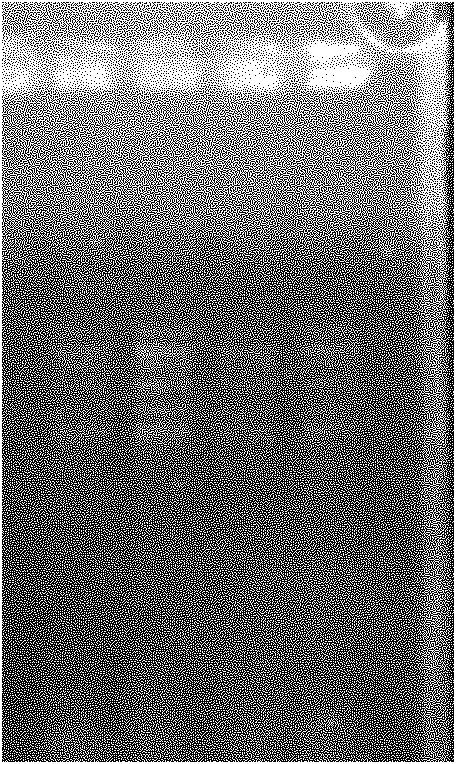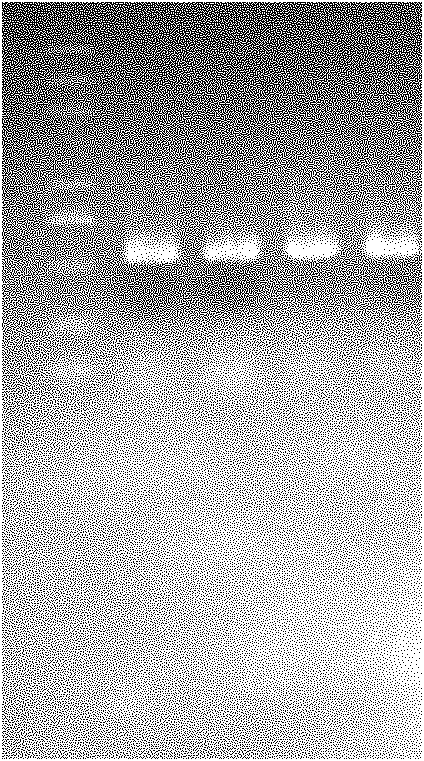Method for cultivating plant capable of preventing rice black-streaked dwarf virus infestation
A technology of plants and fragments, applied in botany equipment and methods, biochemical equipment and methods, plant gene improvement, etc., can solve the problems of aggravation of rice and corn diseases, achieve broad prospects, specific targets, and no disease resistance effect Ecological Risk Effects
- Summary
- Abstract
- Description
- Claims
- Application Information
AI Technical Summary
Problems solved by technology
Method used
Image
Examples
Embodiment 1
[0043] Embodiment 1, the discovery of target sequence (S7-1-Hp)
[0044] 1. Extraction of double-stranded RNA
[0045] Take 0.3g of rice (Huajing No. 6) leaves infected with rice black-streaked dwarfvirus (Rice black-streaked dwarfvirus), add liquid nitrogen and grind it into powder, put it into a 2mL centrifuge tube; add 700μL 2×STE buffer, 100μL SDS solution (10%), 900 μL of water-saturated phenol, vortexed for 30 minutes; the vortexed sample was centrifuged at 10000 g for 15 minutes, the supernatant was taken, and ethanol was added to a final concentration of 16.5%, then 3% CF11 cellulose powder was added and shaken for 30 minutes Minutes; centrifuge at 12000g for 3-5 minutes at 4°C, discard the supernatant, add 0.5ml of 1×STE buffer solution containing 16.5% ethanol to the pellet, shake for 5 minutes, then centrifuge at 12000g for 3-5 minutes at 4°C, discard the supernatant Wash the precipitate three times in this way; add 0.25mL 1×STE buffer to the thoroughly rinsed prec...
Embodiment 2
[0057] Embodiment 2, cultivating resistant rice black-streaked dwarf virus-infected plants
[0058] 1. Construction of recombinant plasmid pSK-hairpin (hairpin intermediate vector)
[0059] 1. Synthesize the double-stranded DNA (S7-1-Hp) shown in sequence 2 of the sequence listing.
[0060]2. Using the double-stranded DNA shown in Sequence 2 as a template, perform PCR amplification with a primer pair consisting of Hp left F (701) and Hp left R (702), to obtain PCR amplification product A.
[0061] Hp left F(701): 5'- GTC GAC ATGGATAGACCTGCTCGAGAAC-3';
[0062] Hp left R (702): 5'-gccg AAGCTT TTCTCAACGTCATTTTTGATTAC-3'.
[0063] The Sal I recognition sequence is underlined in Hp left F(701). In Hp left R (702), the HindIII recognition sequence is underlined.
[0064] 3. Using the double-stranded DNA shown in Sequence 2 as a template, perform PCR amplification with a primer pair consisting of Hp right F (703) and Hp right R (704), to obtain PCR amplification product B. ...
PUM
 Login to View More
Login to View More Abstract
Description
Claims
Application Information
 Login to View More
Login to View More - R&D
- Intellectual Property
- Life Sciences
- Materials
- Tech Scout
- Unparalleled Data Quality
- Higher Quality Content
- 60% Fewer Hallucinations
Browse by: Latest US Patents, China's latest patents, Technical Efficacy Thesaurus, Application Domain, Technology Topic, Popular Technical Reports.
© 2025 PatSnap. All rights reserved.Legal|Privacy policy|Modern Slavery Act Transparency Statement|Sitemap|About US| Contact US: help@patsnap.com



